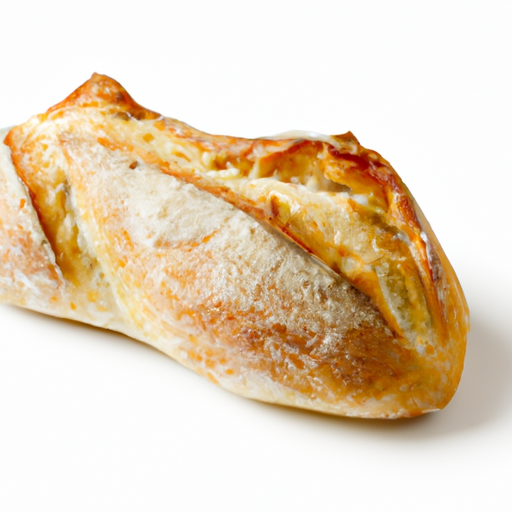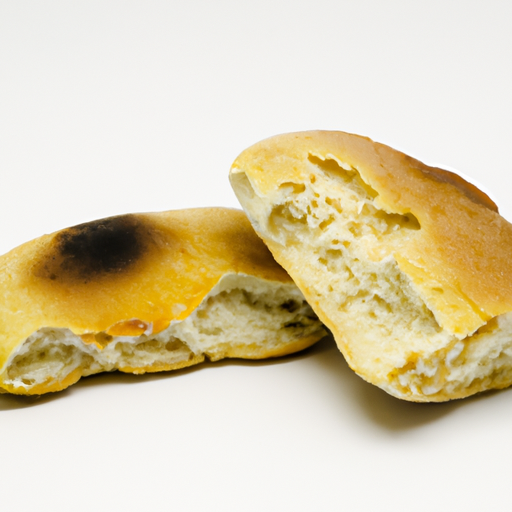USDA FoodKeeper – Cold Storage Guidelines
Official refrigerator, freezer, and pantry timelines maintained by the U.S. Department of Agriculture.
Visit USDA FoodKeeperThe delightful aroma of freshly baked Italian bread can transport you straight to a cozy trattoria in Tuscany. With its crusty exterior and soft, chewy interior, this staple can elevate any meal, but it's essential to enjoy it within three days for optimum flavor and safety. Keep it in your pantry, and remember, once it's past its prime, it’s best to toss it to avoid any health risks.
30 most common foods with instant answers. Print it and stick it on your fridge—completely free! Want more? Upgrade to the complete guide with 70+ foods.
"According to USDA guidelines, Italian bread should be stored at room temperature in a cool, dry place and consumed within 2-3 days for best quality."


Pantry
Room temperature (68°F / 20°C)
In a paper bag or bread box to prevent drying out
3 days
90 days
Mold growth, stale smell, hard texture
Croutons, breadcrumbs, French toast
Baguette, ciabatta
The expiration date on Italian bread indicates the date by which the bread is expected to go stale and may no longer be safe to consume. However, the best quality of Italian bread, in terms of taste and texture, is usually within the first 2-3 days after baking. After this period, the bread may still be safe to eat, but it may become drier and less flavorful.
To determine if Italian bread has gone bad, look for signs of mold, a stale or off smell, and a dry or tough texture. If you see any green or fuzzy spots, detect a musty or sour odor, or notice the bread feels hard or crumbly, it is best to discard it to avoid potential foodborne illness.
Italian bread, like most bread products, is susceptible to mold growth if not stored properly. Mold can produce mycotoxins, which can cause foodborne illness if consumed. To prevent mold growth, it is important to store Italian bread in a cool, dry place and to avoid exposing it to moisture.
To prolong the freshness of Italian bread, store it in a paper bag or bread box at room temperature. Avoid storing Italian bread in plastic bags, as they can trap moisture and promote mold growth. If you have leftover bread, you can freeze it for longer storage. To reheat frozen bread, wrap it in foil and bake it in the oven at 350°F until heated through.
Italian bread, particularly varieties like ciabatta and focaccia, are staples in Italian cuisine and have a rich cultural significance. Bread is an essential part of Italian meals, often used to soak up sauces or as a base for bruschetta. In Italy, bread is considered a symbol of hospitality and is often shared among family and friends during meals.
Italian Bread stored at room temperature for 2 days should be safe to eat, but its quality may have declined. Check for any signs of mold, off odors, or texture changes before consuming. If it looks and smells fine, you can still enjoy it, but it's best to consume it within 3 days for optimal freshness.
When Italian Bread is frozen, the texture may become slightly denser upon thawing. To maintain the best quality after freezing, wrap the bread tightly in plastic wrap or foil before placing it in an airtight container or freezer bag. Thaw the bread at room temperature to reduce moisture loss and preserve its taste and texture.
The shelf life of Italian Bread can vary slightly between different brands due to variations in ingredients and preservatives used. It's essential to check the expiration or best-by date on the packaging to determine the specific shelf life for each brand. Always follow the manufacturer's storage and handling instructions for the best quality and safety.
Cooking Italian Bread, such as toasting or heating it in the oven, can extend its shelf life slightly by reducing moisture content and inhibiting mold growth. However, once cooked, the bread should still be consumed within 3 days for optimal freshness. Store any leftover cooked bread in an airtight container at room temperature to maintain its quality.
Italian Bread typically lasts longer when stored in cooler temperatures, such as during the winter months. Heat and humidity in the summer can accelerate the growth of mold and bacteria on bread, shortening its shelf life. To prolong the freshness of Italian Bread, store it in a cool, dry place away from direct sunlight and moisture, regardless of the season.
When transporting Italian Bread for a 4-hour road trip, it's crucial to keep it at a safe temperature to prevent spoilage. Pack the bread in a sealed, insulated container or cooler with ice packs to maintain its freshness. Avoid leaving the bread exposed to heat or direct sunlight in the car. Once you reach your destination, inspect the bread for any signs of damage before consuming.
30 most common foods with instant answers. Print it and stick it on your fridge—completely free! Want more? Upgrade to the complete guide with 70+ foods.
Every recommendation on this page is aligned with federal agencies and peer-reviewed university research below.
Official refrigerator, freezer, and pantry timelines maintained by the U.S. Department of Agriculture.
Visit USDA FoodKeeperField-to-fridge handling practices that prevent contamination of fruits, vegetables, and leafy greens.
Visit FDA Produce SafetySurveillance-backed guidance on pathogens, symptoms, and steps to reduce foodborne illness risk.
Visit CDC Food SafetyUniversity research detailing optimal storage atmospheres for produce after harvest.
Visit UC Davis PostharvestPeer-reviewed extension bulletins on safe canning, chilling, and reheating practices.
Visit Penn State ExtensionNeed deeper reading? Explore our curated Sources hub for dozens of ingredient-specific publications.
Scan your food directly and get instant safety info using our AI-powered camera feature.
Cooking Ingredients
View expiration date and storage guide →
Beverages
View expiration date and storage guide →
Grains & Pasta
View expiration date and storage guide →
Instant Foods
View expiration date and storage guide →
Condiments & Spices
View expiration date and storage guide →
Fruits & Vegetables
View expiration date and storage guide →
Condiments & Spices
View expiration date and storage guide →
Canned & Jarred Goods
View expiration date and storage guide →
Grains & Pasta
View expiration date and storage guide →
Important: These are general guidelines based on authoritative sources listed above. Always use your best judgment and when in doubt, throw it out. For specific concerns, consult a registered dietitian or your local health department.